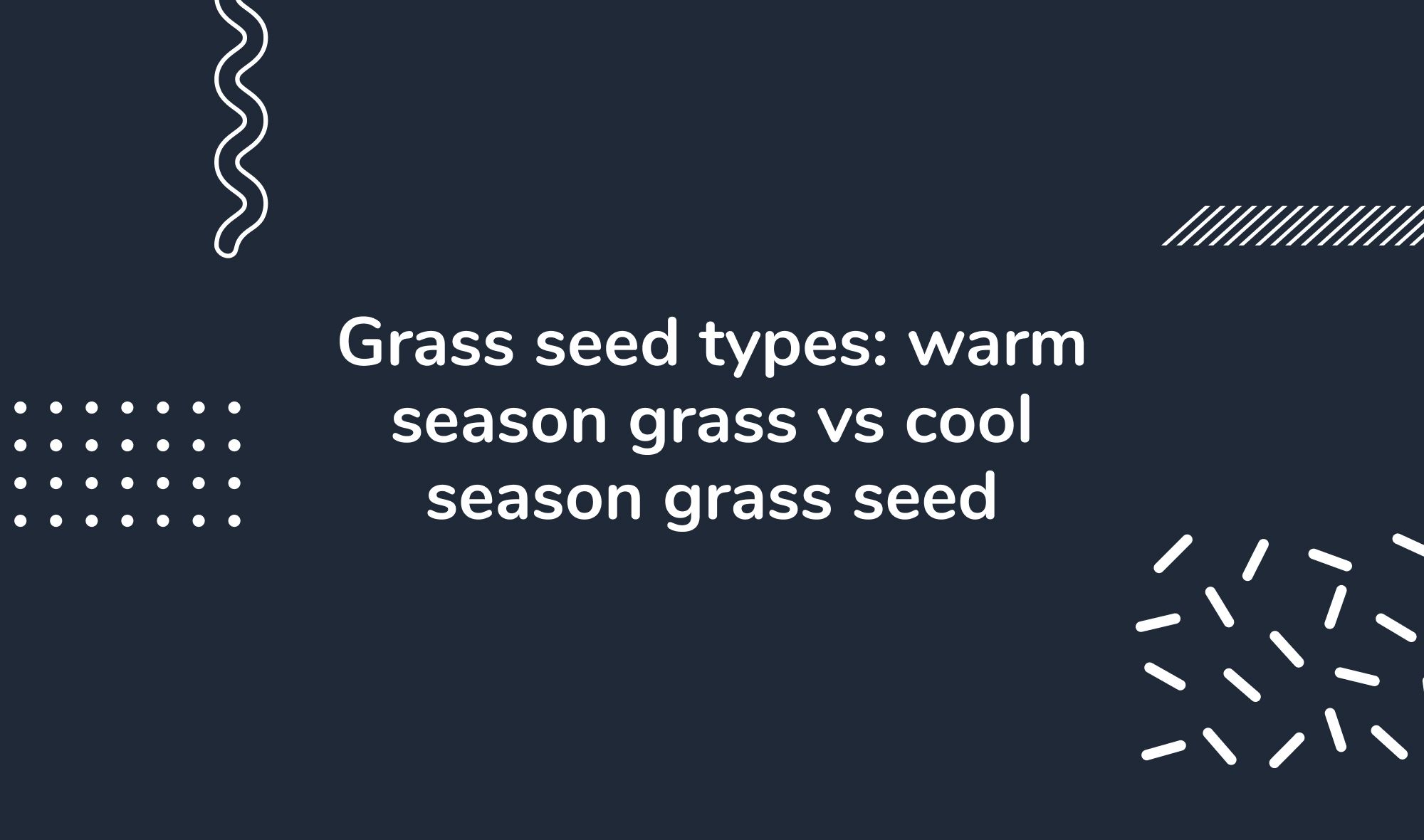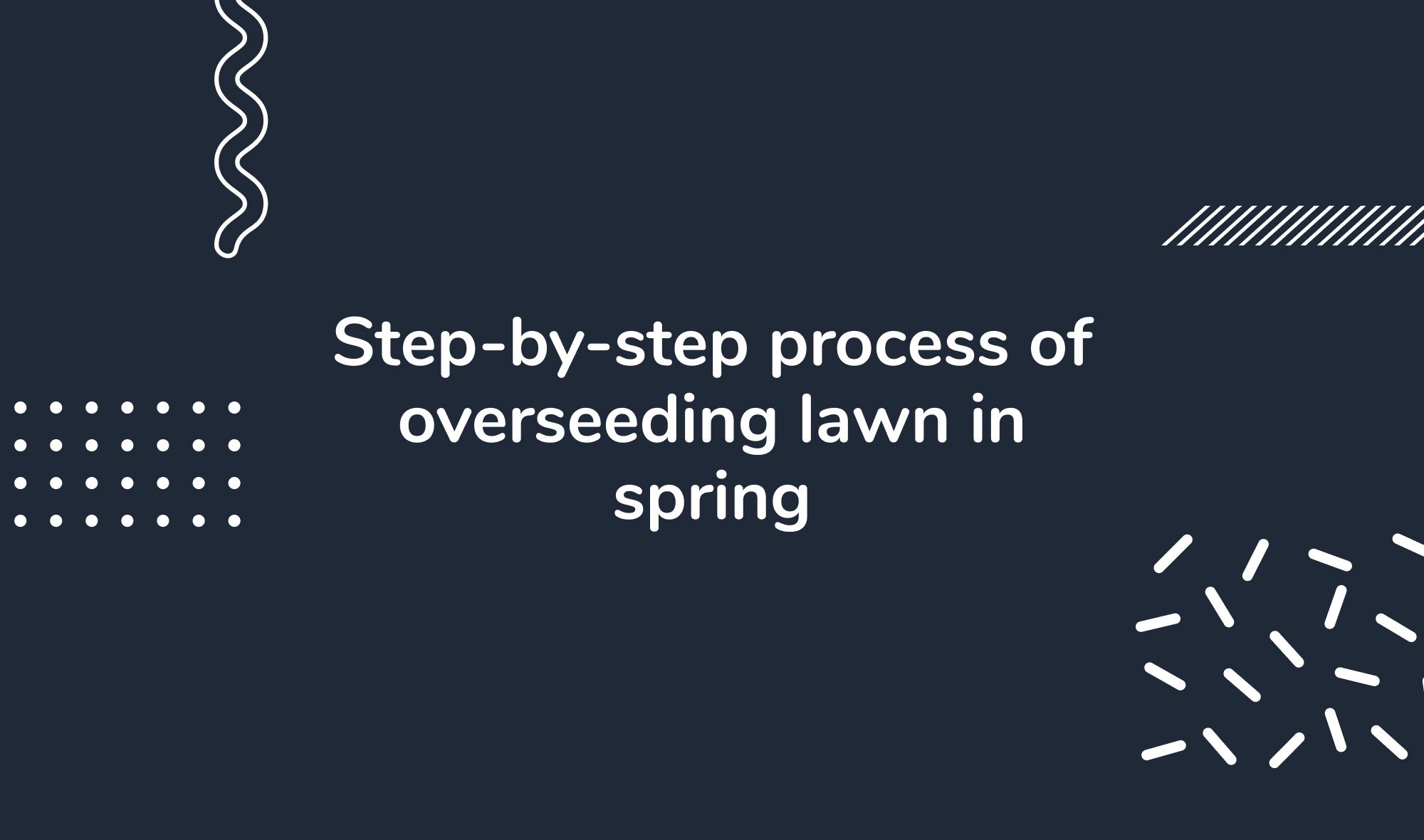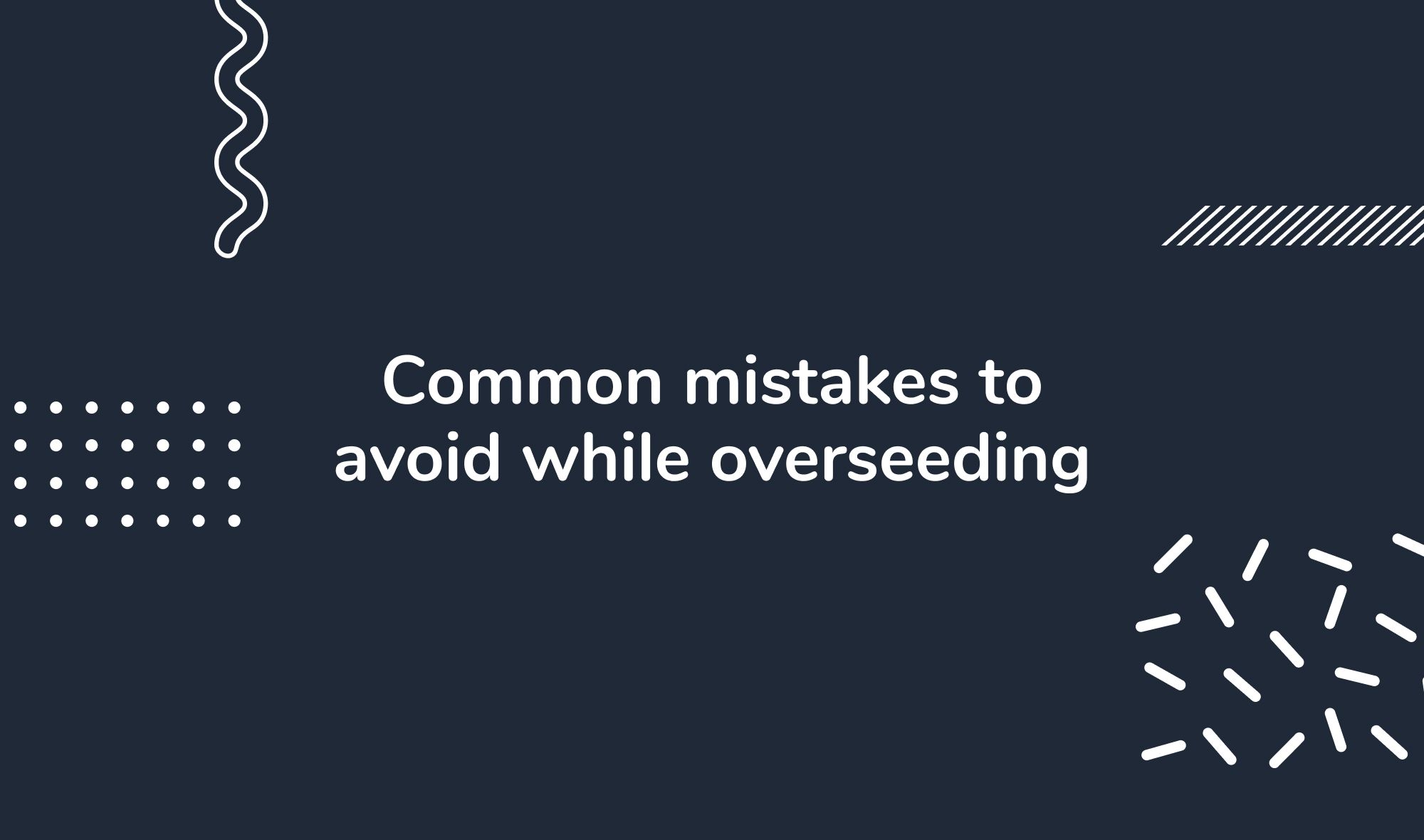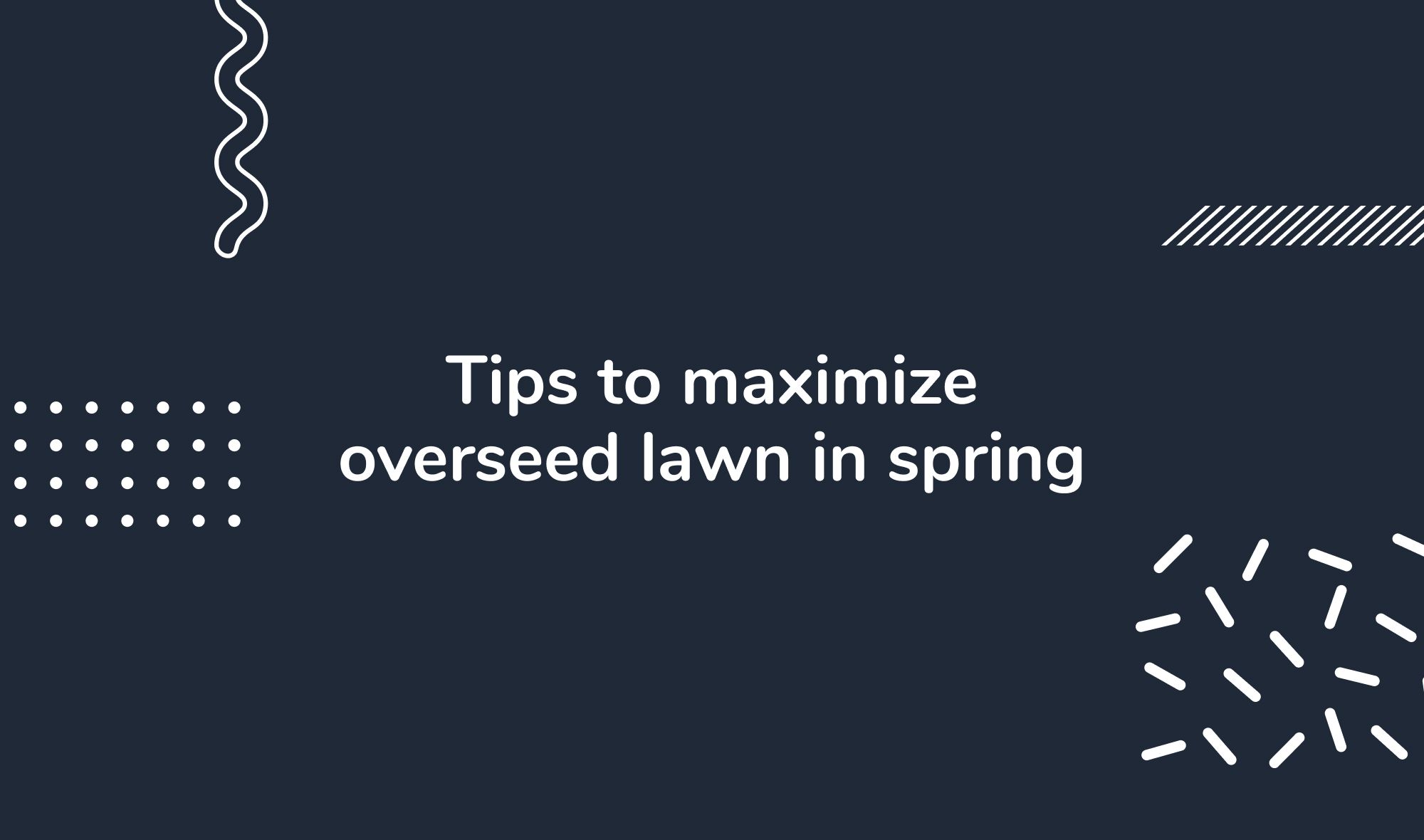Key Takeaways
- Overseeding in spring revitalizes your lawn, filling thin areas and improving overall health.
- Preparation and choosing the right grass seed for your lawn are critical steps in the overseeding process.
- After overseeding, proper care, including watering, mowing, and fertilizing, is necessary for optimal growth.
- Understanding seed rates and your lawn's unique needs ensures effective and efficient overseeding.

Imagine looking out of your window at a lush, vibrant green lawn that looks like it was lifted straight from the pages of a gardening magazine. It's not just a dream. With the practice of overseeding in spring, that picturesque lawn could be yours.
If you've been searching for ways to give your existing lawn a facelift, boost its vitality and, in turn, your home's curb appeal, overseeding might just be the secret sauce you've been missing. Overseeding is a simple process that involves spreading grass seed over an existing lawn, but timing is essential. In this guide, we're going to delve into why overseeding in spring can set your lawn on the path to achieving its greenest, healthiest self.
Whether you're working with a cool season grass seed blend on a lawn in the Pacific Northwest or managing warm season grass in the sunny south, this guide will help you maximize your lawn's potential. It's not just about scattering more grass seed on the ground. Instead, it's about understanding your lawn grass, respecting your local climate, and using the right grass seed at the right time.
So, stick around and let's transform your lawn from good to great together. This is your comprehensive guide to overseeding in spring.
Join our newsletter
Stay on top of the latest in landscaping and lawn care with one valuable tip right in your inbox every Saturday morning.
The process of overseeding lawn in spring
Overseeding is much more than just scattering grass seed on your lawn. It's a meticulous process that starts with preparing your lawn and ends with choosing the right type of seed.
Preparing your existing lawn for overseeding
Before you begin to spread grass seed, the first step in the overseeding process is to prep your existing lawn. Your new grass seedlings need the best possible start in life, and that begins with a clean and healthy bed of soil.
Start by giving your lawn a good mowing. Mow it a little lower than you usually do, but take care not to scalp the lawn. You're aiming to open the existing grass canopy to allow more sunlight to reach the new grass seed. Following that, rake the lawn to remove any dead grass, leaves, or debris that may prevent the new grass seed from reaching the soil.
The next step is to tackle soil compaction. Heavy foot traffic, pets, or even just time can lead to soil compaction. This makes it difficult for new grass seeds to germinate and take root. To relieve soil compaction, aerate your lawn. This creates tiny holes in the soil, allowing air, water, and nutrients to reach the grass roots more effectively. Aeration also aids in better seed to soil contact, which is crucial for seed germination.
Once you've finished aeration, enrich the soil by adding soil amendments or a soil improver. Things like compost, manure, or wood ash can be beneficial for creating enriched soil that's perfect for new grass seed. The aim is to create an environment where new seeds can access all the vital nutrients they need for fast growth.
Choosing the right grass seed for your lawn
The choice of grass seed is as important as the overseeding process itself. Selecting the wrong grass seed could lead to less-than-optimal results or even failure.
Understand your lawn's needs first. The type of grass seed you need depends on your local climate, the specific conditions of your lawn (e.g., full sun or shade), and the grass type currently in place. Cool season grasses like Kentucky bluegrass or perennial ryegrass thrive in cooler climates and temperatures, while warm season grasses like Bermuda grass are best suited for lawns in warmer areas.
When purchasing grass seed, pay attention to the label on the seed bag. High-quality grass seed will have a mixture of grass varieties that are suited for different conditions (shade, sun, high traffic). Avoid mixes with high percentages of 'filler' seeds or weed seeds. The right grass seed will lead to a thicker, healthier, and more resilient lawn that can resist diseases, pests, and weed invasion.
In the following sections, we'll discuss in more detail the best grass types for spring overseeding, how much seed to use, and the steps to care for your newly overseeded lawn. So, read on to make the most of your lawn care regimen this spring.
Grass seed types: warm season grass vs cool season grass seed

When it comes to selecting grass seed, it's not a one-size-fits-all situation. The two primary types of grass seed, warm season and cool season, have their own unique characteristics, advantages, and disadvantages. Let's delve deeper into these two types and help you decide which grass seed is best for your lawn this spring.
Pros and cons of warm season grass
Warm season grasses, like Bermuda grass, are primarily suited to regions with warmer soil temperatures. Their peak growing season is in the late spring to early summer and mid-summer, making them perfect for those located in southern regions.
Pros of warm season grass:
- They thrive in heat and handle drought conditions better than cool season grasses.
- They have a robust root system, which helps them resist foot traffic and recover quickly from damage.
- Warm season grasses usually require less water and fewer nutrients, reducing lawn care efforts.
Cons of warm season grass:
- In cooler temperatures, they tend to become dormant and may brown, which isn't ideal if you're seeking year-round greenery.
- They may struggle to establish in shaded areas, preferring full sun conditions.
- Some varieties, like Bermuda grass, can be aggressive and may invade garden beds if not properly maintained.
Pros and cons of cool season grass seed
On the other side of the grass spectrum, we have cool season grass seed types, including Kentucky bluegrass and perennial ryegrass. These grasses flourish in the cooler temperatures of the early spring and fall.
Pros of cool season grass seed:
- They maintain their lush green color even into the cooler months, providing a year-round green lawn in many climates.
- Many varieties have good shade tolerance, so they're suitable for lawns with trees or buildings that cast shadows.
- Cool season grasses often have quick germination rates, allowing for fast growth and establishment.
Cons of cool season grass seed:
- They may struggle in hot, dry conditions and might require more watering in the summer months.
- Some cool season grasses can be susceptible to diseases, especially in prolonged periods of heat and humidity.
- They can have slower recovery rates from damage compared to their warm season counterparts.
Deciding which type of seed is best for your lawn in spring
The choice between warm season and cool season grass seed comes down to your local climate and the specific conditions of your lawn. Do you live in an area with long, hot summers or is your climate generally cooler with mild summers? Does your lawn receive full sun, or is it partially or fully shaded?
Typically, if you live in the north, a cool season grass seed would be best for spring overseeding. The cooler temperatures of the early spring provide an ideal environment for these grass types. If you live in the south, a warm season grass could be better, but remember that they start to grow more actively a little later in the spring as soil temperatures rise.
Consult with a local extension service or a trusted garden center to get advice tailored to your specific situation. This way, you'll be better equipped to make an informed decision and pick the best grass seed for your lawn.
Detailed guide to spring overseeding

Armed with the knowledge of why spring is an ideal time for overseeding and the right type of grass seed to use, it's time to get into the practical side of things. Here, we'll walk you through the step-by-step process of overseeding your lawn in spring and highlight some common mistakes you should avoid for the best results.
Step-by-step process of overseeding lawn in spring

Step 1: Lawn assessment and preparation
First, assess your lawn to determine if overseeding is necessary. Look for thinning grass, bare patches, or signs of disease. Next, prepare your existing lawn for overseeding. This involves mowing your lawn shorter than usual and raking to remove dead grass and debris. Aeration might be necessary to alleviate soil compaction and enrich the soil with amendments for better seed germination.
Step 2: Choose the right grass seed
Based on your local climate and lawn conditions, choose either a cool season or warm season grass seed. Don't overlook the importance of choosing the right grass seed, as the right choice sets the foundation for a successful overseeding.
Step 3: Spread the grass seed
Use a broadcast seeding method for larger lawns and a drop-style seeder or handheld spreader for smaller areas. The aim is to distribute the seed evenly over your entire lawn. Don't forget areas with bare spots or thinning grass.
Step 4: Cover the seed
After spreading the grass seed, lightly rake your lawn to cover the new seed with a thin layer of soil. This increases seed to soil contact, protects the seed from birds, and helps retain moisture.
Step 5: Water and care for your lawn
Water the overseeded areas thoroughly but gently. The soil should be kept consistently moist but not waterlogged. Continue watering daily until new grass seedlings have reached mowing height. At this point, you can return to your regular watering schedule.
Step 6: Lawn care post overseeding
Once the new grass is well established, maintain your lawn care routine. This includes regular mowing, watering, and fertilizing. With the right care, you'll see your lawn transform over time into a lush, green carpet.
Common mistakes to avoid while overseeding

Overseeding is an excellent way to rejuvenate your lawn, but it's not foolproof. Here are some common mistakes to avoid for successful overseeding:
Overcrowding seeds: More grass seed doesn't necessarily mean more grass. Overcrowding can lead to competition for resources, hindering the healthy growth of new grass.
Ignoring soil pH: The pH of your soil can significantly affect grass growth. Use a soil test to determine pH levels and make necessary soil amendments.
Skipping aeration: This step is crucial for relieving soil compaction and promoting better seed to soil contact.
Inadequate watering: Both under and overwatering can be detrimental to new grass seedlings. Keep the soil consistently moist until new grass establishes.
Mowing too soon or too late: Wait until new grass seedlings reach the recommended mowing height before breaking out the mower.
By following this detailed guide to spring overseeding, you're on the path to enhancing the beauty and health of your lawn. As you oversee your lawn this spring, remember that patience is key. It takes time for the new grass to establish and blend seamlessly with your existing lawn. But when it does, the results are worth it. Enjoy the transformation and the compliments from neighbors and passersby.
Determining how much seed to overseed

As you prepare for overseeding, one crucial question is, "how much grass seed do I need?" While there's no exact science to this, understanding the factors that influence seed rates and why they're important can guide you in making the best decision for your lawn.
Factors affecting the amount of grass seed needed
Several factors can impact how much seed you'll need for overseeding. Here are a few key elements to consider:
Size of the lawn: The larger your lawn, the more grass seed you'll require. Measuring your lawn accurately is the first step in estimating the amount of seed you'll need.
Existing grass condition: Lawns with large bare patches or significant thinning will require more grass seed than those with a healthier, denser existing grass.
Type of grass: Different grass varieties have different seeding rates. For example, a type like Kentucky bluegrass might require less seed per square inch compared to perennial ryegrass due to its spreading growth habit. This information is usually provided on the seed bag.
Overseeding method: The method you choose for overseeding can also impact the amount of seed required. Methods like spot seeding, which targets specific areas, may use less seed compared to broadcast seeding that covers the entire lawn.
Join our newsletter
Stay ahead of the curve in all things outdoor.
Get the inside scoop on the latest landscaping, lawn care, and fencing trends with 1 actionable tip every Saturday morning.
The importance of seed rates in overseeding
Understanding seed rates—the recommended quantity of seed per unit area—is essential when it comes to overseeding. Here's why:
Balanced growth: Adhering to the recommended seed rates ensures your lawn has the chance to grow in evenly, preventing overcrowding that could lead to poor growth and increased susceptibility to disease.
Cost efficiency: Using the right amount of seed means you're not wasting money on excess seed that your lawn doesn't need.
Environmental impact: Using only the necessary amount of grass seed can reduce the environmental footprint of your lawn care practices.
In conclusion, the amount of seed required for overseeding varies based on your specific circumstances. It's recommended to read the guidelines on the seed bag and consider factors such as lawn size, existing lawn condition, grass type, and overseeding method.
Remember, more grass seed isn't necessarily better. Aim for a balance that encourages the best growth for your lawn. By understanding your lawn's needs and the importance of seed rates, you can effectively overseed your lawn and enjoy a beautiful, green lawn come summer.
Tips to maximize overseed lawn in spring

Overseeding is a crucial step in your spring lawn care routine, but your work doesn't stop there. Maintaining your lawn post overseeding, especially with watering, mowing, and fertilizing, is just as important. Let's dive into the best practices for lawn care after overseeding to ensure your hard work pays off.
Best practices for watering, mowing, and fertilizing your lawn after overseeding
Watering: After overseeding, keep the top layer of soil consistently moist but not waterlogged. This usually means watering the lawn lightly but frequently for the first few weeks. As the new grass seedlings grow taller, you can transition back to a regular watering schedule, typically less frequent but deeper watering.
Mowing: Wait until the new grass reaches the proper mowing height before mowing. This gives the new grass time to establish roots and reduces the stress on the young plants. Initially, set your mower to a higher setting to avoid cutting the grass too short.
Fertilizing: New grass seedlings need nutrients for fast growth. Using a starter fertilizer when you overseed can provide these essential nutrients. Once the grass seedlings have grown to mowing height, switch to a regular lawn fertilizer as part of your lawn care routine.
How to care for your lawn to maintain the benefits of overseeding
Proper lawn care is key to maintain the benefits of overseeding and keep your lawn looking its best throughout the year. Here are some tips:
Regular mowing: Regular mowing encourages grass to grow thicker and prevents weeds from taking over. Be sure not to cut your lawn too short, which can stress the grass and expose the soil to weed seeds.
Weed control: It's easier to prevent weeds than to get rid of them. Use a pre-emergent crabgrass preventer in the early spring to avoid a weed takeover. Post-emergent weed control can be used for established weeds.
Adequate fertilization: Your lawn needs nutrients to thrive. Regularly fertilizing your lawn with the right type of fertilizer for your grass type ensures your lawn gets the nutrients it needs.
Seasonal lawn care: Your lawn's needs change with the seasons. From aerating in the fall to overseeding in the spring, keeping up with your lawn's seasonal needs ensures it stays healthy and vibrant.
Overseeding in the spring is an excellent way to fill in thin spots and introduce new grass varieties to your lawn. But for the best results, post overseeding care is essential. By following these tips and maintaining a regular lawn care routine, you'll be well on your way to a lush, green lawn. And as always, happy gardening!
Conclusion
Overseeding in spring is more than just a cosmetic fix—it's a revitalizing process that breathes new life into your lawn, enhancing its overall health and vibrancy. By filling in thin areas, it improves your lawn's appearance while helping it become more resistant to disease and pests. Choosing the right grass seed, understanding the overseeding process, and learning how to care for your lawn after overseeding are all crucial elements in achieving a lush, green lawn.
Don't be daunted by the idea of overseeding. With some preparation and patience, it's a task that can be tackled by any homeowner looking to improve their lawn's aesthetic and health. Plus, the reward is worth it: a beautiful lawn that will be the envy of your neighborhood come summer.
Remember, the key to a successful overseed is understanding your lawn's unique needs, choosing the right grass seed, and following the correct steps in the overseeding process. But it doesn't stop there. Proper post overseeding care, including watering, mowing, and fertilizing, plays a significant role in ensuring your hard work bears fruit—or, in this case, grass.
With the information we've shared in this guide, we believe you're well-equipped to tackle overseeding this spring. So, grab your grass seed and get ready to overseed your way to a more beautiful lawn.
Happy gardening, and here's to a greener lawn!
Additional Resources:
To learn more about achieving the greenest grass and comprehensive lawn care tips, check out our blog post on Achieving the Greenest Grass: A Comprehensive Guide to Lawn Care.
Join our newsletter
Stay ahead of the curve in all things outdoor.
Get the inside scoop on the latest landscaping, lawn care, and fencing trends with 1 actionable tip every Saturday morning.